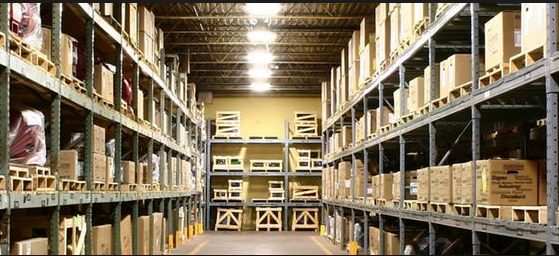All of us understand or at least discovered that converting from Metal-Halide (High Intensity Discharge) to LED will help you save cash.
But how much? What are the difference you or other motives ought to know about?
In this post, we break down all the variables which you should know about before making a decision to convert to LED from Metal-Halide. Here are the 3 reasons we believe Metal-Halide is won over by LED.
1. Lamp (Source) Efficiency Vs Fixture (System) Efficiency
Let us have a look at the info on a typical 400 watt metal-halide bulb. Well specifications can vary greatly, a visit to some popular on-line site that sells Metal-Halide bulbs reveals a brand new light bulb has the following specifications:
Color Temperature: 4000K
First Lumens: 32,000 to 36,000
Life Hours: 20,000
A recent white paper by the Dark Skies Society rated the mean lumens for a 400W Metal-Halide to be life expectancy to be lumens and the rated 20,500 around 15,000 hours. But for purposes of the discussion, we'll stick with the amounts we have been knowledgeable about.
There's lots of info that is fascinating to examine. First lumens is an amount that is high, but in fact, a Metal-Halide bulb starts off quite glowing and then drops its lumens fairly fast, settling in at a lower lumen output signal fairly fast. It is common to lose just as much as 20% in the first 6 months. So while 36,000 lumens seems remarkable, within be below 30,000 lumens. Lumen depreciation in a metal-halide bulb is comparatively fast. It's noticed that already at 50 % at half life of the light bulb, around 8,000-10,000 hours, lumen depreciation is
Likewise, let us look at the operating nature of the light bulb. A Metal-Halide bulb is omni directional. That means lighting fixture is dispersed in every way. So it creates as it does facing downwards as much lighting fixture parallel to the earth. You must assemble it, assemble it, and deliver it to where you are interested, to make this lighting fixture useful. In fixture design, you add a reflector to do that occupation. The principal issue with lighting fixture that is reflected is how powerful is the reflector getting the lighting fixture that bounces to the earth off of it. A lumen that bounces back into the fixture and bounces off the reflector is considered a reduction lumen. Is throwaway. Greater of the lighting fixture or just as much as 30% can be lost in this bounce that was reflective. So if we suppose the first lumens of the lamp at 36,000 if we do the mathematics of a metal-halide bulb in a high bay fixture lumens, after 6 months we'd anticipate the fixture successful lumen efficacy to be:
36,000 lumens - 20% (first lumen reduction) = 28,800 lumens
Lumens reduction from reflector bounce: 8,640
Total lumens after 6 months in Highbay fixture: 20,160
This doesn't consider shields or any lenses the fixture might have. Take into account, this is light bulb lumens, not fixture lumens, so anything else added that gets in the way of getting lighting fixture to the earth will always take far from lumens that are powerful.
Compare this to LED. If you consider a fixture, like a Led Retro that replaces the Metal-Halide assembly, or a LED highbay, all the lighting fixture is directional, in that, it's directed to where it's needed. Reflectors aren't needed. You'll find nothing . In LED, it does occur when it comes to lumen depreciation, but it takes a lot more for it to occur. By way of example, our LED retrofit kits have a L70 (lumen depreciation to 70% of initial lumens) of over 100,000 hours. So where as Metal-Halide loses lots of lumens in the first 6 months of life, for a lot more LED tends to keep its lumens.
2. Using Life
As mentioned, the working life of a Metal-Halide bulb that is typical appears to be around 20,000 hours. Bigger light bulbs, around 15,000 hours., are like a 1000 watt Metal-Halide In terms of LED, there are various ways providers describe the life of the merchandise. One manner would be to mention L70. L70 just isn't a measurement of ending of life, but it's a measurement of lumen degradation up to 70% of initial lumens. This doesn't mean ballast or the driver another part might fail.
What we do understand is the life of a Metal-Halide bulb is around 15,000 to 20,000 hours. What we also understand is that at half life, it has recently lost 50% of its initial lumens. So while not dead, tremendously unsuccessful. For the record, 400 watts is still consumed by it though it's not half as dull.
Compare that to our Led Retro rated at 100,000 hours (L70). So by the time the LED head reaches 100,000 hours, you've done 5 Metal-Halide bulb replacements, maybe more.
3. Efficacy (lumens/watt)
This really is the precursor to another matter, energy savings, but the fundamental assumption is the more efficient the light bulb is, the more income you may save. Thus let us compute the lumen efficacy of metal-halide versus LED.
To compute lumen efficacy, you should take the complete lumens divide it by the absolute watts used up and generated. In the instance of of Metal-Halide, in addition, you must contain ballast draw. It's around 455 watts if you recorded the complete watts used up of a typical 400W light bulb. The ballast uses up about 15% more energy over and above the light bulb consumption.
So computing lumen efficacy for metal-halide: 36,000 lm / 455W = 79.12 lumens/w.
Let us compare that with our 150 watt Led Retro: 23,250 lm / 150W = 155 lumens/w. Nearly double of Metal-Halide.
And remember the golden rule: Efficacy Saves Cash! So if you are looking for a Metal Halide Replacement option for your Highbays, you should consider LED
source http://my-led-lighting-guide.blogspot.com/2016/08/led-vs-metal-halide-3-reasons-why-led.html

No comments:
Post a Comment